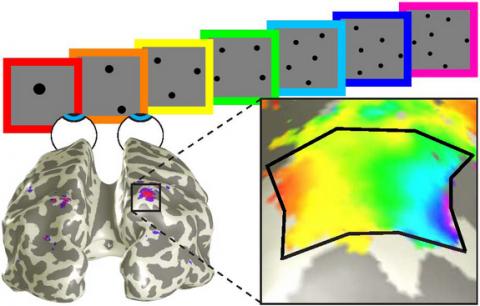Is "Numerosity Humans" sixth sense?
Dots on the mind
In the study, Harvey and his colleagues placed participants in a magnetic resonance imaging (MRI) scanner and showed them patterns of dots that varied in number over time. They would show one dot over and over, then two dots over and over, then three dots, and so on. The researchers used an advanced imaging method known as high-field fMRI, which allowed them to see fine-scale details of brain activity. They analyzed the neural responses using techniques similar to those used to study the parts of the brain responsible for vision.
The posterior parietal cortex, responded to the dot patterns in an organized way: Small numbers of dots were represented in one area, whereas large numbers were represented in another, the results showed. It's as if the brain was acting as an abacus. "In an abacus, you map number onto space," Harvey told LiveScience. [5 Seriously Mind-Boggling Math Facts]
The thinking brain
The findings, detailed online today (Sept. 5) in the journal Science, suggest that higher cognitive functions might rely on the same organization principles as sensory systems do. For instance, in face recognition — which is much more complicated than number sense — objects that look similar might be grouped together in the brain, Harvey said.
In these topographical maps, a larger brain area was dedicated to perceiving smaller numbers than to larger ones, in line with previous findings that number sense becomes less precise as the quantity of items increases. Importantly, numerosity is different from mathematical ability or symbolism. Numerosity only refers to numerical amount.
People vary somewhat in their ability to distinguish numerosity, Harvey said. At the extreme, you have savants — individuals, many of whom have autism or a similar disorder, who possess extraordinary abilities in math, art or other areas. Some savants can look at a pile of pick-up sticks, for example, and instantly know how many there are. "While there's always this map structure, there's not always the same context," Harvey said.
Tanya Lewis, Staff Writer
Follow Tanya Lewis on Twitter and Google. Follow us @livescience, Facebook & Google. Original article on LiveScience.

